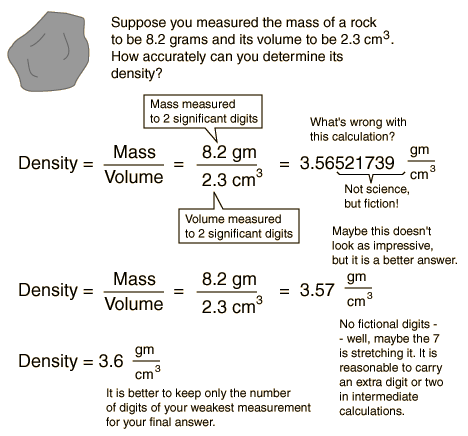The number of significant digits in an answer to a calculation will depend on the number of significant digits in the given data, as discussed in the rules below. Approximate calculations (order-of-magnitude estimates) always result in answers with only one or two significant digits.
When are Digits Significant?
- Non-zero digits are always significant. Thus, 22 has two significant digits, and 22.3 has three significant digits.
- With zeroes, the situation is more complicated:
- Zeroes placed before other digits are not significant; 0.046 has two significant digits.
- Zeroes placed between other digits are always significant; 4009 kg has four significant digits.
- Zeroes placed after other digits but behind a decimal point are significant; 7.90 has three significant digits.
- Zeroes at the end of a number are significant only if they are behind a decimal point as in (c). Otherwise, it is impossible to tell if they are significant. For example, in the number 8200, it is not clear if the zeroes are significant or not. The number of significant digits in 8200 is at least two, but could be three or four. To avoid uncertainty, use scientific notation to place significant zeroes behind a decimal point:
- 8.200 ´ 103 has four significant digits
- 8.20 ´ 103 has three significant digits
- 8.2 ´ 103 has two significant digits

